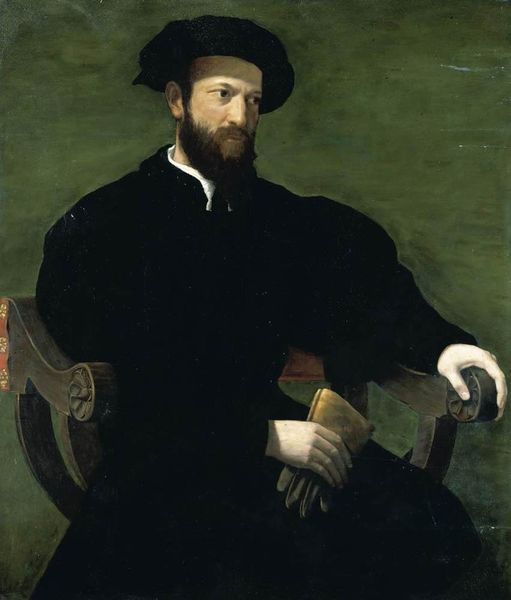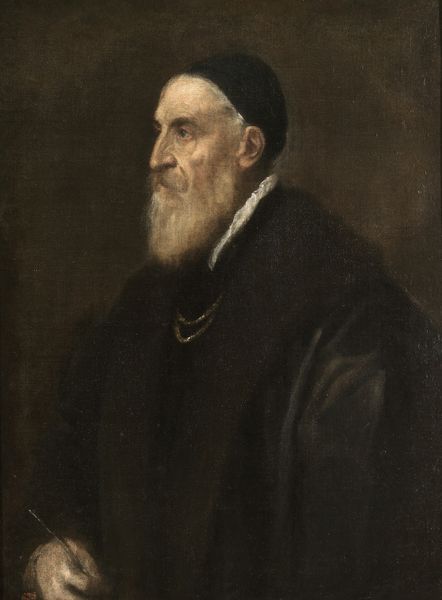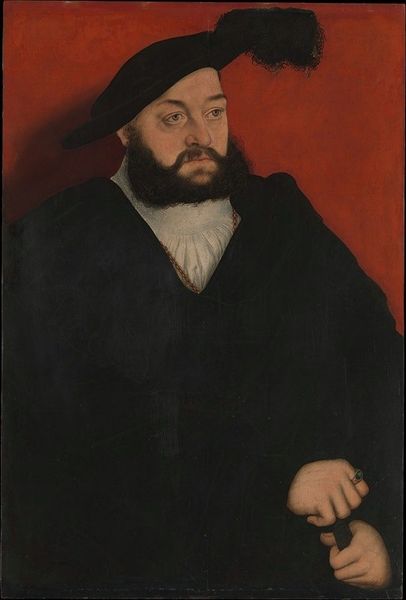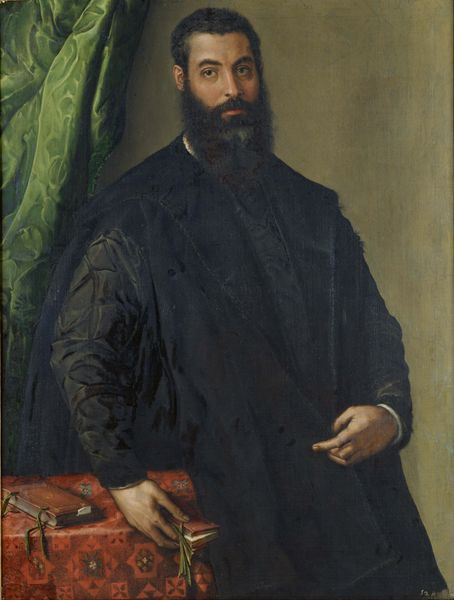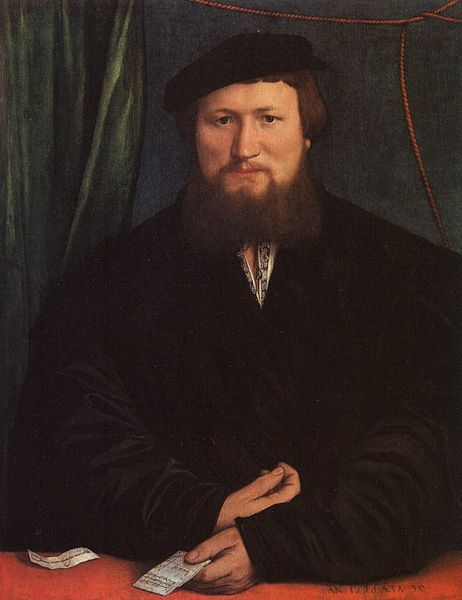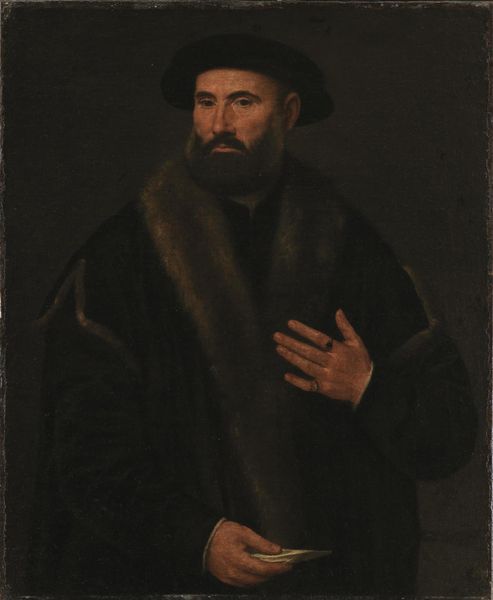
painting, oil-paint
#
portrait
#
painting
#
oil-paint
#
mannerism
#
italian-renaissance
#
portrait art
Copyright: Public domain
Francesco Salviati painted this portrait of a gentleman, we think, sometime in the mid-16th century. Here is a man, richly but soberly dressed in black, holding a gold coin or medallion. It's tempting to imagine him as a banker or merchant, someone whose wealth has been accumulated through trade. But this would be too simple an interpretation. In Florence and Rome at this time, portraits were also a way of signaling one's place in a complex social hierarchy. Salviati was a Florentine painter who worked for powerful patrons like the Medici family. It was through institutions like these that artists were able to access new materials and establish their careers. Looking at this portrait today, the historian must ask, what did it mean to be a gentleman in 16th century Italy, and how did portraiture serve to reinforce existing social norms? Studying the dress, the pose, and even the symbolic meanings of particular objects will tell us much about the culture of the time.
Comments
No comments
Be the first to comment and join the conversation on the ultimate creative platform.

